Gas Engines
Modelling gas engine oil life
04 July 2023
28 August 2024
Gas engine oil delivers cleanliness and wear protection over extended landfill gas field trials

Infineum has successfully completed an 11 year field trial of its gas engine oil (GEO) technology in stationary power generation gas engines running on landfill gas. Infineum Team Leader of Large Engine Technology in North America, Nida Sheikh, discusses how the engine cleanliness and wear protection results, observed over this exceptionally long test period, confirm the reliability of Infineum chemistry in landfill gas applications.
There is a growing demand for energy in a world that is working to reduce greenhouse gas emissions and meet sustainability ambitions. Energy producers are looking for lower-emissions fuel alternatives, and forecasts suggest that to 2050, the use of lower-carbon renewables will grow in this sector.
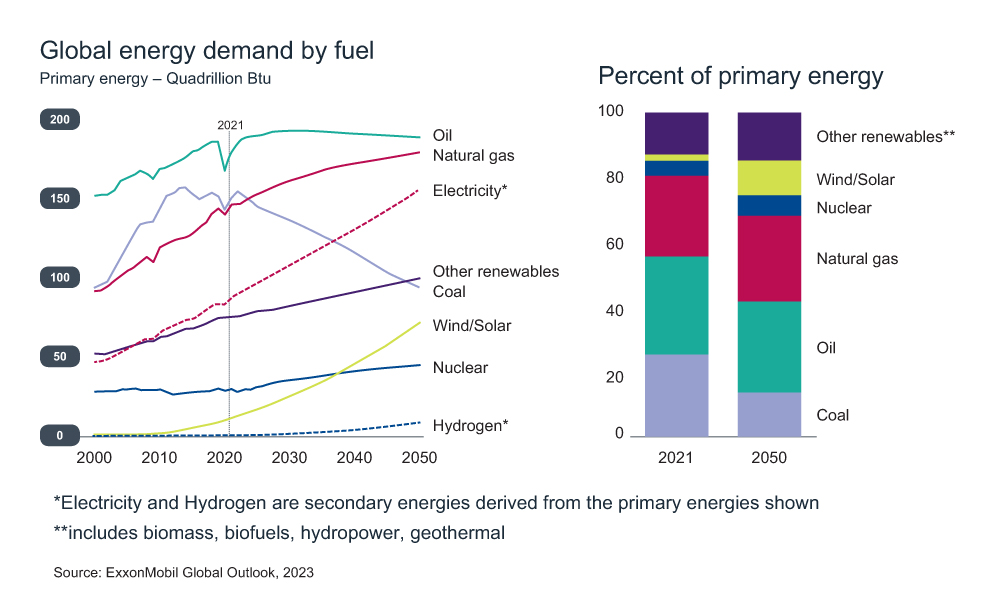
Landfill gas is a renewable option that is a natural byproduct of the decomposition of organic matter in landfill sites. It is a mixture of some 50% methane, 50% carbon dioxide and a number of other trace components. Extracting landfill gas and using it to produce energy reduces the escape of methane (a highly potent greenhouse gas) to the atmosphere, which makes it a win-win option.
However, there are challenges associated with using landfill gas in reciprocating engines, which are used to both transport the gas in pipelines and to generate power. First, it contains significant quantities of sulphur along with halogens, both of which react to make strong mineral acids during the combustion process. These acids must be neutralised by the oil to prevent engine damage. Second, it can introduce silicone contaminants from waste, which during combustion may form hard siloxane deposits on the cylinder heads and valves. In addition these deposits can cause abrasive wear and provide an insulating layer, which prevents the lubricant from transferring heat away from the engine.
If the build up of deposits becomes too great, they must be manually removed, which introduces unscheduled maintenance - increasing both running costs and engine downtime.
One of the most important criteria for stationary gas engine users regarding oil choice is its proven ability to keep the engine reliably in operation right through from one oil drain to the next. In our view, where landfill gas is used, the oil’s ability to control siloxane deposits is the most important differentiator.
Since there are no industry standards to validate the performance of gas engine oils, we set up a trial to assess our GEO additive technology in real-world operating conditions.
With the anticipated growth in the use of landfill gas for power generation in mind, Infineum wanted to ensure its products provide sufficient hardware protection over the life of the oil in this more challenging fuel. To do this we started an extensive field trial programme. The trial, run in two Caterpillar 3520 engines with aluminium pistons operating at a landfill gas site, examined four established Infineum additive technologies, which were compared to five commercially available (non-Infineum) products.
The Infineum test oils were all formulated using salicylate detergent technology with low sulphated ash levels. However, the Infineum oils differed in other formulation aspects such as dispersancy and antioxidancy. Oil drain intervals were set on average at 1,000 hours.
Altogether, over 91,550 consecutive test hours, or over 11 years, were accumulated on our GEO formulations.
Results confirmed the ability of our salicylate detergent technology to control siloxane deposits much better than the commercially available products tested.
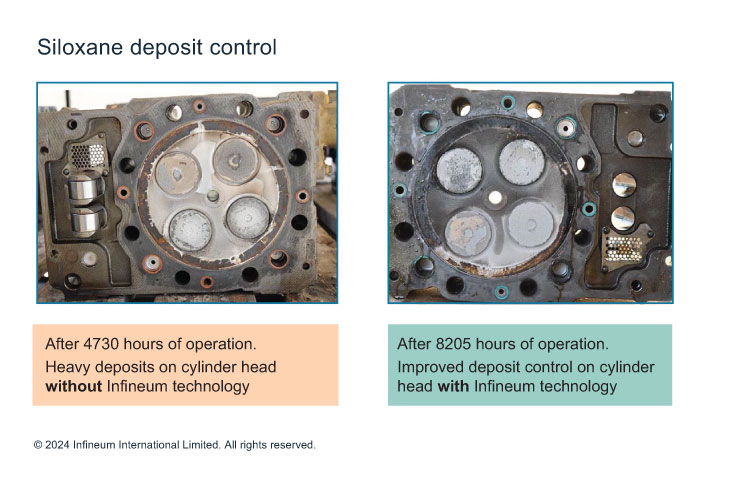
In terms of the bearings, Infineum GEO chemistry delivered robust protection for the full duration of the field-test.
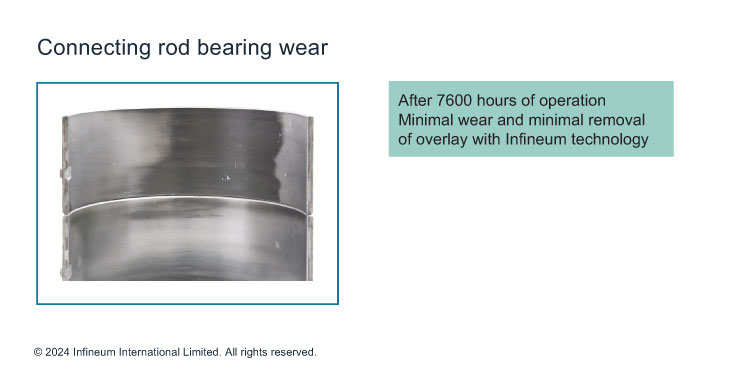
Infineum GEO technology, on average, also demonstrated better base number (BN) retention, highlighting the ability of our detergents to help maintain a higher BN over time. This is crucial to neutralise acids formed during fuel combustion to prevent corrosion and extend oil drain internals – particularly important for engines operating under high pressure, temperature, and load conditions, where the demands on the lubricant are greater.
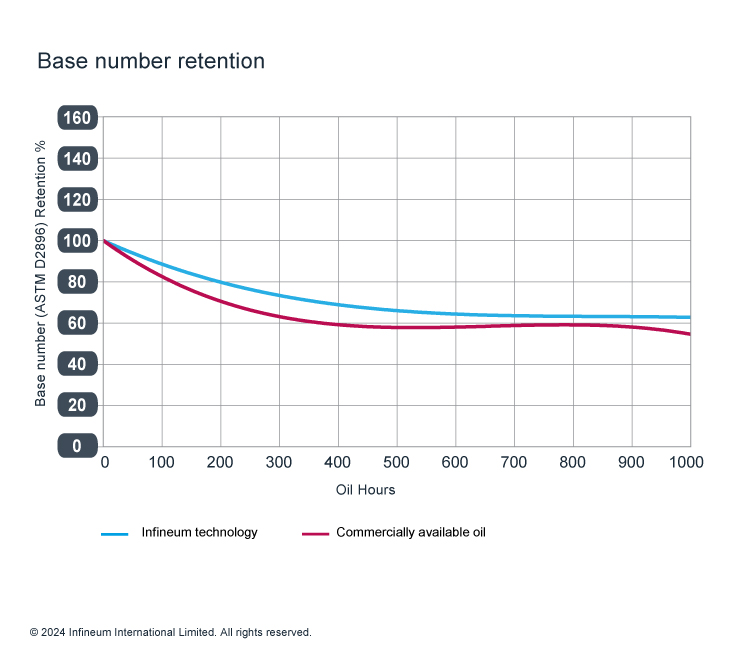
In addition, the results of end-of-test ratings suggest that length of operation and silicon flow rate/concentration have more of an impact on piston and ring cleanliness than the additive chemistry.
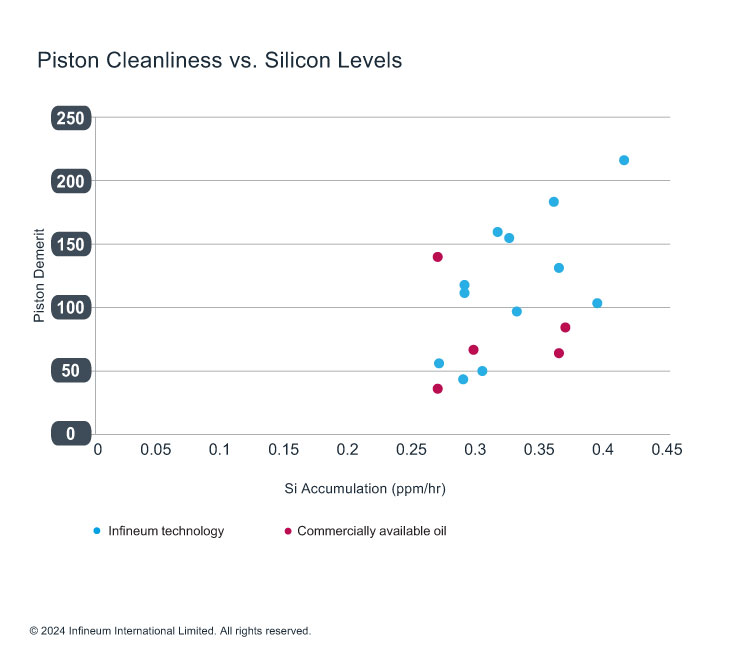
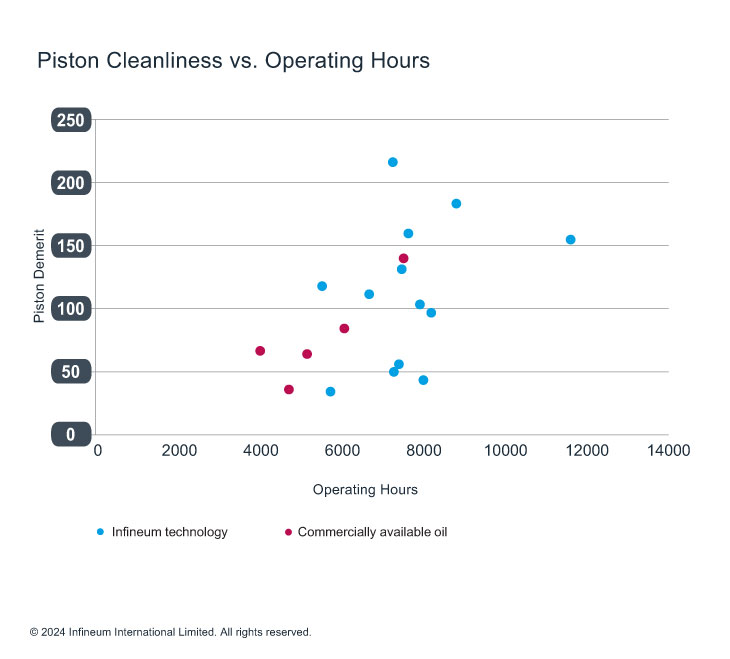
The performance achieved, over the entire 11-year duration of the field test, is a testament to the robustness of our chemistry in Caterpillar-powered landfill gas applications. In addition, the care taken by the operator in respecting scheduled overhaul maintenance intervals undoubtedly contributed to these results.
Gas engine operators are looking to maximize profitability, through improved reliability and longer service intervals. This requires robust lubricant technology designed to ensure reliable and efficient operation that keeps the engine running 24/7 until the recommended maintenance interval and beyond.
As more challenging fuels are introduced it is vital that lubricants are carefully designed to control the strong acids and deposits to ensure trouble free operation.
The overall picture from our extensive field trial is of a remarkably smooth operation over the full 11 years, despite the fairly aggressive nature of the landfill gas fuel. The results we obtained represent a Certificate of Good Performance for lubricants formulated with Infineum GEO additive technology.
Sign up to receive monthly updates via email
